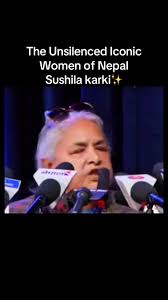Sushila Karki: From Nepal’s First Female Chief Justice to Interim Prime Minister Amid Historic Protests

A Historic Appointment in Nepal’s Political Landscape
Sushila Karki, Nepal’s first and only female Chief Justice, has been appointed to lead the interim government following the recent overthrow of Prime Minister KP Sharma Oli by Gen Z protesters. Karki secured the position after gaining 31% of the votes in a virtual meeting of the protest group, narrowly defeating Kathmandu Mayor Balen Shah, who received 27%.
Background and Legacy of Leadership
Karki’s remarkable journey began as an advocate in Biratnagar in 1979, where she steadily built her career, first becoming an ad-hoc Supreme Court justice in 2009, then securing a permanent position the following year, before reaching the pinnacle of her judicial career. She is particularly renowned for her unwavering stance against corruption, notably delivering a landmark verdict in 2012 that led to the conviction of serving minister Jaya Prakash Gupta on graft charges. Her bench also handled crucial cases involving peacekeeping deployments, major infrastructure projects, and groundbreaking rulings that granted Nepali women the right to pass citizenship to their children.
The Path to Interim Leadership
The recent appointment follows weeks of street protests triggered by corruption scandals and a controversial ban on social media apps. As Nepal seeks stability in the aftermath of the Oli regime’s collapse, Karki represents continuity, experience, and credibility. The young protesters have rallied behind her clean image and proven track record against corruption, viewing her as a stark contrast to the discredited political establishment.
Looking Forward
In a recent interview, Karki confirmed her willingness to lead the country temporarily, acknowledging the trust placed in her by the Gen-Z movement. She has indicated that her immediate priority would be to honor those who lost their lives during the demonstrations, stating, “Our immediate focus will be something for the young people who died during the protest.”
